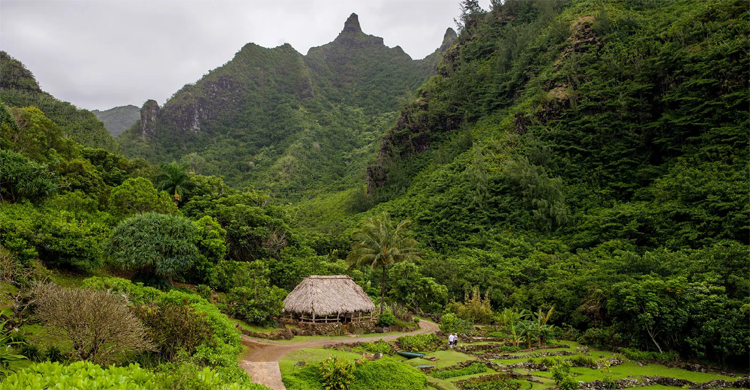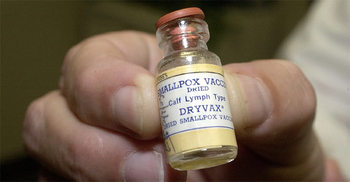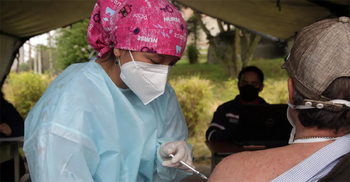Hawaii's ancient land management system

Walking the paths of Limahuli Garden & Preserve, my jacket soaked through by the steady rain characteristic of Kauai's lush north shore, I bent over placards introducing Pritchardia limahuliensis, a native fan palm endemic only to this Hawaiian valley, and breathed in the sweet scent of the white hibiscus koki'o ke'oke'o, once thought extinct.
But while I came to Limahuli eager to see rarities like these preserved in this 17-acre National Tropical Botanical Garden, I was soon captivated by something even more fascinating: intricate layers of ancient rock-walled terraces that climbed the valley and vanished into the dense highland forests above. Shown by carbon dating to be more than 1,000 years old, they are part of an ancient ahupua'a, a sophisticated land-management and food-production system that once allowed Hawaii's isolated and densely populated pre-contact communities to be entirely self-sufficient.
Pre-contact, Kauai had more than 50 ahupua'a, with hundreds or even thousands more throughout the other Hawaiian islands.
Described by Hawaiians as extending from mauka (mountains) to makai (ocean), each ahupua'a had its narrow starting point high in the inland volcanic peaks, and then widened, like a pie slice, to include a stretch of shore and the fishing grounds up to a mile out to sea. Channels diverted stream water to irrigate lo'i kalo (lowland taro pond fields), which were engineered to circulate water from pond to pond and prevent stagnation. The result: per-acre yields five times that of dryland farming.
Where the freshwater streams met the ocean, elaborate rock-walled fishponds mixed the nutrient-rich water from the taro ponds with tidal flow, creating ideal conditions for fattening fish captured through sluice gates. The uplands, considered wao akua (the realm of the gods), were off limits to all but those with knowledge of forest stewardship.
"The thing about the ahupua'a that is important to understand is that water is the organising principle," said Davianna Pōmaikaʻi McGregor, professor of ethnic studies and director of the Center for Oral History at the University of Hawaii, Manoa. "Our word for water in Hawaiian is va'i, and our word for wealth is va'i vai, because if you had an abundance of water then your land was rich and you had an abundance of food."
In the community of Hā'ena at Kauai's remote north-western tip, decades of effort to preserve and restore one of the last remaining examples of a complete ahupua'a are paying off. Limahuli Garden & Preserve, which is part of Hā'ena, has now restored 600 acres of agricultural terracing. Hui Maka'āinana o Makana, a grassroots community group that includes many descendants of Hā'ena's original families, has rebuilt taro ponds and revitalised traditional mountains-to-sea land management while also creating the first state-sanctioned, community-based marine fishery.
In the process, Hā'ena has become a model for efforts to preserve existing ahupua'a throughout the islands and restore others long ago destroyed by pineapple plantations and cattle ranches.
"The apuhua'a system was very holistic, thinking about the ecology of the whole watershed and the agricultural land and fisheries as one place," said Lei Wann, director of Limahuli Garden & Preserve, who is descended from one of the original families of Hā'ena. "This is the way we managed our resources for hundreds of years, and now we're coming around to see how well they understood and cared for their environment by what's left to us today."
Across the islands, bold and diverse coalitions of community activists, scientists and environmentalists are working with the state government, the parks service and private landowners to re-establish traditional sustainable practices. And through efforts that have brought them international prominence, they're translating them to the modern environment – a key goal in a US state that now infamously imports 85% of its food.
"The ahupua'a is the guide map to looking at Hawaii from a completely traditional Hawaiian point of view, taking you back thousands of years and offering you the thoughts of the people who have lived there and been stewards of the land all this time," said Sam 'Ohu Gon, senior scientist at the Biocultural Initiative of the Pacific, a project of the University of Hawaii at Manoa. "It's the doorway to accessing all that past knowledge that is completely applicable today."
In fact, Gon says, the ahupua'a system, also called moku, could model a way to feed and provide for the Earth's rapidly growing population in the face of climate change. "With these intensively managed farming and fishing systems, Hawaiians were able to maintain a remarkably small ecological footprint, using less than 15% of their terrestrial ecosystem, while supporting several hundreds of thousands of people with no external inputs," he explained.
Scientists used spatial distribution models of these ahupua'a to calculate their potential past production and distribution capacities, then evaluated their future potential factoring in contemporary land use and a range of future climate scenarios. They found that those production levels could meet the demands of Hawaiian consumption today. In 2018, the United Nations selected Hawaii to become a Local2030 Sustainability Hub, an honour that recognises the strength of the state's community-led organising efforts and their potential to be a model for others.
On every Hawaiian island, projects are underway to restore native species, reforest uplands decimated by grazing, reclaim estuaries, rebuild taro fields and fishponds, and protect ocean fisheries. While in most areas, development prevents the recreation of an entire ahupua'a system, new signage projects are marking the boundaries of historic ahupua'a, raising awareness of the holistic system.
"We're identifying communities with longstanding relationships to the land and sea, then working with them to combine the best of science and the best of local community methods," said Gon. "Hawaiian culture was actively suppressed, so finding those enclaves where that traditional knowledge is still alive is always a joy."
A prime force in this knowledge-sharing is Oahu-based non-profit organisation Kuaʻāina Ulu ʻAuamo (KUA), which functions as a grapevine linking grassroots indigenous and local natural-resource management initiatives throughout the islands. Through coalitions like Hui Malama Loko I'a, a network of fishpond restoration practitioners, KUA helps organisers share methods, strategies and ideas.
"The idea is that once you have core communities that are doing these projects, people begin to see the positive impacts and they want to bring those changes to their own communities," said KUA director Kevin Chang.
KUA's highest profile successes have resulted from efforts to establish Community Based Subsistence Fishing Management Areas (CBSMA) that give coastal communities primary responsibility for setting fishing rules, which may exclude commercial fishing. This is a movement that has rapidly gained momentum in recent years. "There are traditions and practices in each unique community around how they fish and manage their fishery, and we know that the management of natural resources is more effective when local power is given to the people who directly rely on and understand the resource," said Chang.
While some might not think of ocean fishing as an element of land management, it was exactly that in the ahupua'a, according to Wann. "Caring for the land means that your ocean will be healthier, and part of the ahupua'a included practices of using resources to make the ocean more abundant, and that's what we're still doing today in the 21st century – we never stopped."
Terrestrial initiatives are gaining ground as well. One of Gon's favourite examples is the Auwahi Forest Restoration Project, a cooperative between the local community and one of Maui's largest ranching families, which since 1997 has been working parcel by parcel to reforest uplands on the slope of Haleakalā volcano destroyed by cattle grazing. "It started as one small unit surrounded by blasted grassland, and now it's been so successful you can see the forest from space," Gon said.
Visitors can learn about the ahupua'a renaissance at a growing number of parks, botanical gardens and reserves. Ahupuaʻa ʻO Kahana State Park, on the east side of Oahu, preserves a 5,300-acre swath from the 2,670ft crest of the Ko'olau mountains all the way to Kahana Bay. Waimea Valley, a park best known for its thundering waterfall, is also home to a respected ahupua'a restoration. On the island of Hawaii, the Amy B H Greenwell Ethonobotanical Garden preserves archaeological remnants of ahupua'a terraces.
"There's a new generation that are seeing the importance of doing that kind of cultivation and reclaiming their legacy from their ancestors," said McGregor. "A lot of has come as the students are learning our Hawaiian language again, and they want to reinforce their connection through the stewardship of the land."
Visitors to Hawaii also have an important role to play in the ahupua'a renaissance, Wann said, with initiatives creating new ways for visitors to learn about traditional agricultural and fisheries management, as well as limiting access to protect resources. In Hā'ena, for example, a new permitting system initiated in 2019 restricts the number of visitors to Hā'ena State Park and the Kalalau Trail to 900 a day, requiring advance reservations for entrance.
"Oftentimes people think of the ahupua'a system as something of the past, but we're definitely becoming more and more cognizant of it as something that can be part of our Hawaiian society today," Wann said. "We're creating an ahupua'a for the 21st Century."
Source: BBC





